A covered call ETF writes call options on the stocks held within the fund to help reduce investment risk. This also allows investors to take advantage of upside potential in the same way an individual investor trading stock options would do. This is a great strategy during market volatility while still bringing in monthly income from option writing and regular dividends.
What is the Best Covered Call ETF?
- DIVO: Amplify CWP Enhanced Dividend Income ETF
- KNG: FT Cboe Vest S&P 500 Dividend Aristocrats Target Income ETF
- QYLD: Global X NASDAQ 100 Covered Call ETF
- FTHI: First Trust BuyWrite Income ETF
- XYLD: Global X S&P 500 Covered Call ETF
- FTQI: First Trust Nasdaq BuyWrite Income ETF
- PBP: Invesco S&P 500 BuyWrite ETF
- OVL: Overlay Shares Large Cap Equity ETF
- JEPI: JPMorgan Equity Premium Income ETF
- XYLG: Global X S&P 500 Covered Call & Growth ETF
| Manager |  |  |  |  | 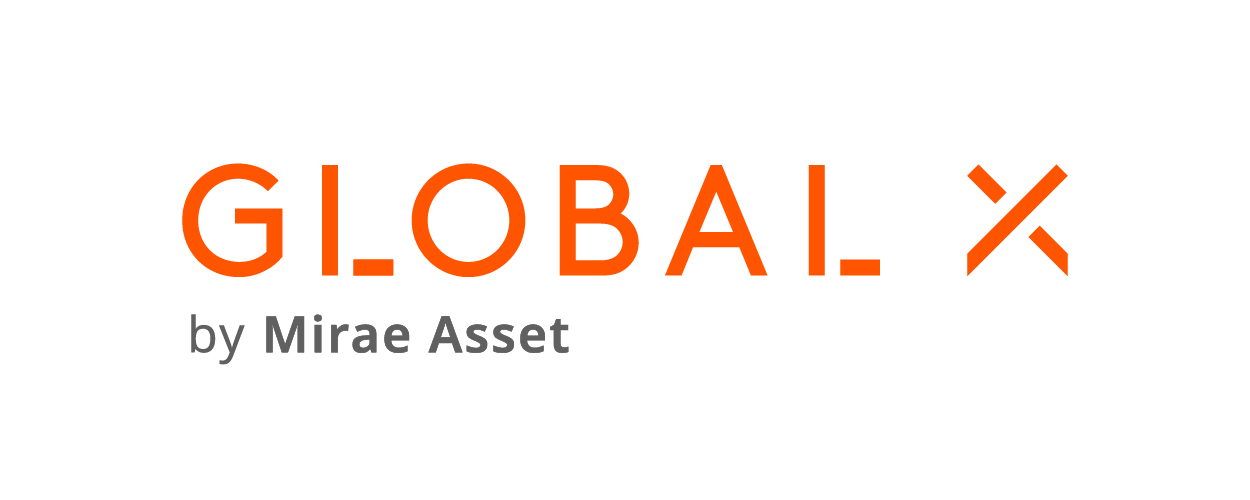 |  |  | 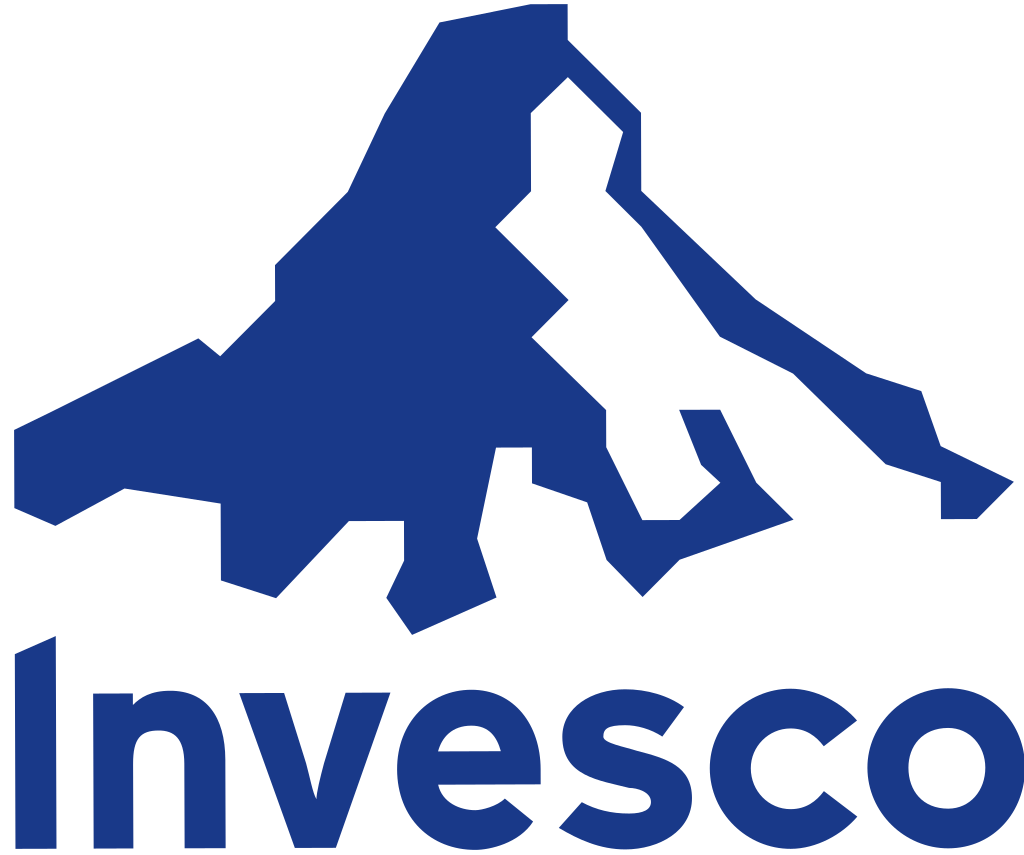 | 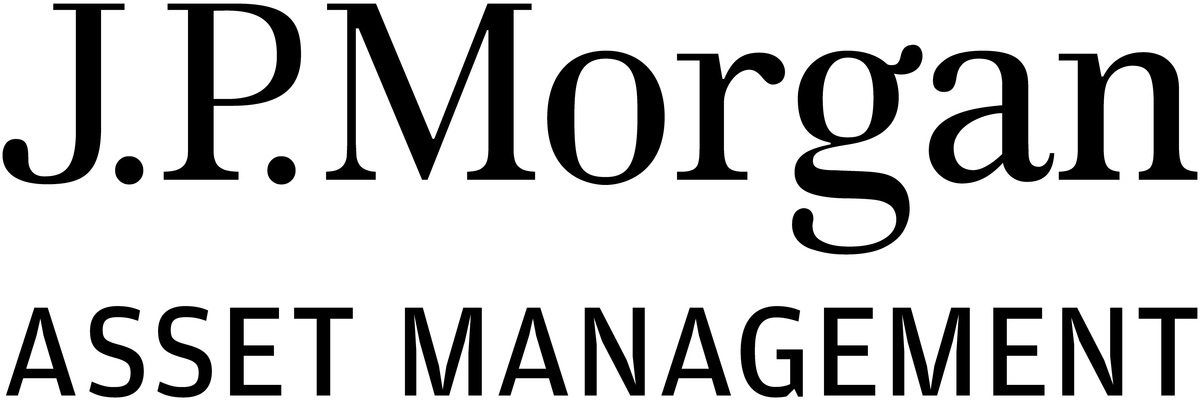 |  |
| ETF | DIVO | FTHI | FTQI | KNG | QYLD | XYLD | XYLG | PBP | JEPI | OVL |
| Inception | 2016-12-14 | 2014-01-06 | 2014-01-06 | 2018-03-26 | 2013-12-11 | 2013-06-21 | 2020-09-18 | 2007-12-20 | 2020-05-20 | 2019-09-30 |
| MER | 0.55% | 0.75% | 0.75% | 0.75% | 0.60% | 0.60% | 0.60% | 0.49% | 0.35% | 0.79% |
| AUM | $2,905,158,096 | $380,434,874 | $131,061,568 | $1,658,934,679 | $7,800,000,000 | $2,800,000,000 | $61,160,000 | $95,100,000 | $30,220,000,000 | $134,580,276 |
| Distributions | Monthly | Monthly | Monthly | Monthly | Monthly | Monthly | Monthly | Monthly | Monthly | N/A |
| 1M | 3.97% | N/A | N/A | N/A | 3.68% | 2.77% | 5.92% | N/A | 4.70% | 11.42% |
| 3M | -0.01% | 1.79% | 3.16% | -2.79% | 0.63% | -0.76% | 0.45% | N/A | 0.45% | 1.10% |
| YTD | 3.49% | 16.96% | 21.41% | 2.91% | 19.48% | 8.84% | 14.43% | 9.18% | 7.72% | 21.69% |
| 1Y | 0.71% | 13.40% | 16.27% | -1.23% | 15.75% | 7.39% | 10.28% | 7.72% | 5.70% | 14.19% |
| 3Y | 8.78% | 9.58% | 7.90% | 6.59% | 3.05% | 5.21% | 7.18% | 5.51% | 8.99% | 9.34% |
| 5Y | 10.07% | 5.21% | 3.65% | 8.20% | 5.60% | 4.67% | N/A | 3.48% | N/A | N/A |
| 10Y | N/A | N/A | N/A | N/A | N/A | 6.07% | N/A | 4.93% | N/A | N/A |
10. XYLG: Global X S&P 500 Covered Call & Growth ETF
Global X S&P 500 Covered Call & Growth ETF (XYLG) follows a “covered call” or “buy-write” strategy, in which the Fund buys the stocks in the S&P 500 Index and “writes” or “sells” corresponding call options on approximately 50% of the value of the portfolio of stocks in the same index.
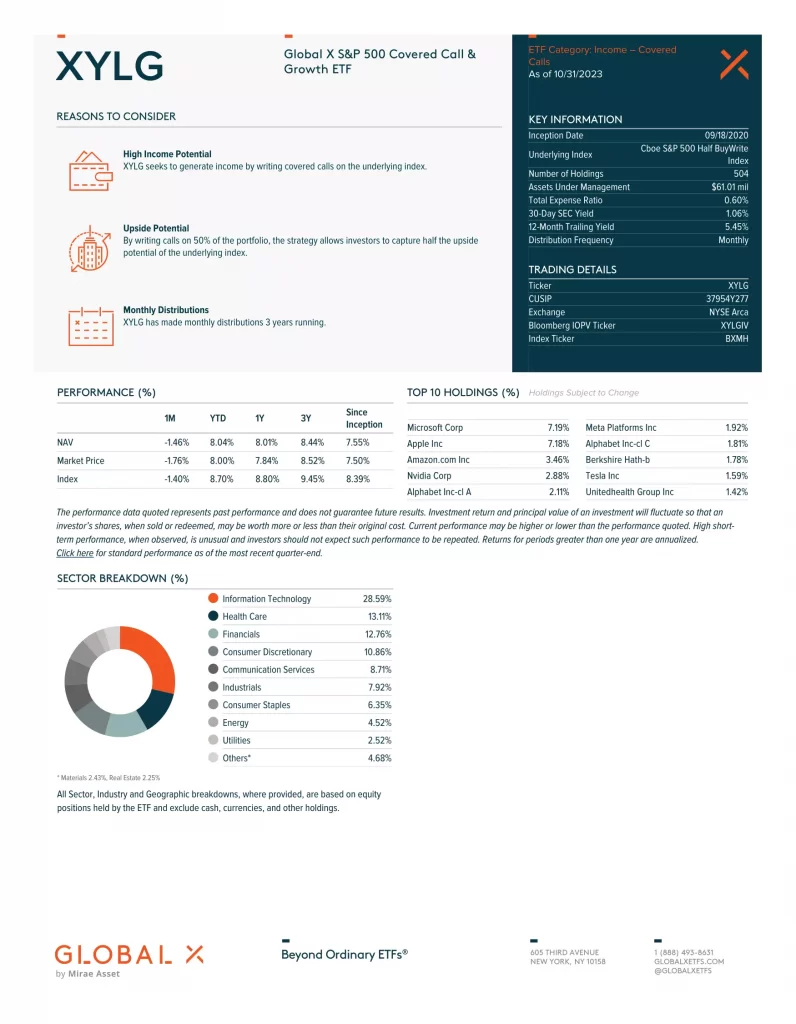
9. JEPI: JPMorgan Equity Premium Income ETF
JPMorgan Equity Premium Income ETF (JEPI) seeks to deliver monthly distributable income and equity market exposure with less volatility. Seeking consistent premium income with lower volatility.
- Portfolio managers with over 60 years of combined experience investing in equities and equity derivatives.
- Defensive equity portfolio employs a time-tested, bottom-up fundamental research process with stock selection based on our proprietary risk-adjusted stock rankings.
- Disciplined options overlay implements written out-of-the-money S&P 500 Index call options to generate distributable monthly income.
- Top quintile yield in the Derivative Income category
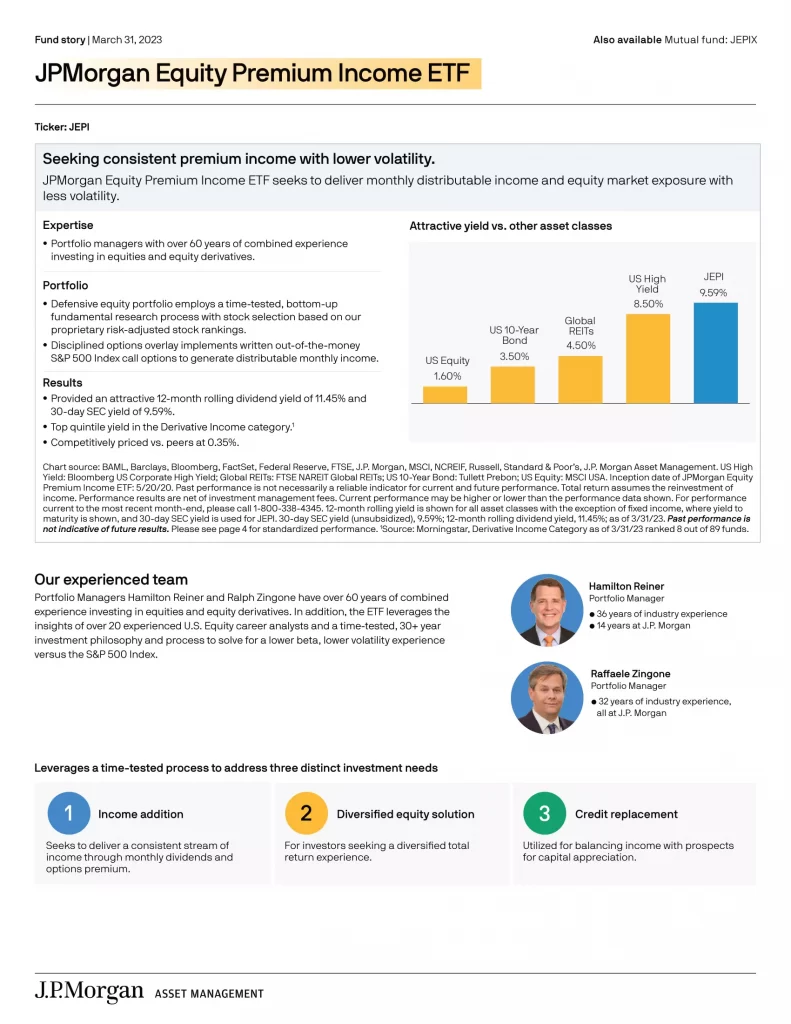
8. OVL: Overlay Shares Large Cap Equity ETF
The Overlay Shares Large Cap Equity ETF seeks to outperform the S&P 500 TR Index through a combination of capital appreciation and income generation. The Fund invests in options that derive their performance from the performance of the S&P 500 Index. Selling (writing) and buying options are speculative activities and entail greater than ordinary investment risks. The Fund’s use of put options can lead to losses because of adverse movements in the price or value of the underlying asset, which may be magnified by certain features of the options. When selling a put option, the Fund will receive a premium; however, this premium may not be enough to offset a loss incurred by the Fund if the price of the underlying asset is below the strike price by an amount equal to or greater than the premium. Purchased put options may expire worthless and the Fund would lose the premium it paid for the option. The Fund may lose significantly more than the premiums it receives in highly volatile market conditions.
The Fund will invest in short-term put options which are financial derivatives that give buyers the right, but not the obligation, to sell (put) an underlying asset at an agreed-upon price and date. The Fund’s use of options may reduce the Fund’s ability to profit from increases in the value of the underlying asset. The Fund could experience a loss or increased volatility if its derivatives do not perform as anticipated or are not correlated with the performance of their underlying asset or if the Fund is unable to purchase or liquidate a position.

7. PBP: Invesco S&P 500 BuyWrite ETF
Invesco S&P 500 BuyWrite ETF (PBP) is based on the CBOE S&P 500 BuyWrite Index. The Fund generally will invest at least 90% of its total assets in securities that comprise the Index and will write (sell) call options thereon. The Index is a total return benchmark index that is designed to track the performance of a hypothetical “buy-write” strategy on the S&P 500 Index. The Index measures the total rate of return of an S&P 500 covered call strategy. This strategy consists of holding a long position indexed to the S&P 500 Index and selling a succession of covered call options, each with an exercise price at or above the prevailing price level of the S&P 500 Index. Dividends paid on the component stocks underlying the S&P 500 Index and the dollar value of option premiums received from written options are reinvested. The Fund and the Index are rebalanced and reconstituted monthly.

6. FTQI: First Trust Nasdaq BuyWrite Income ETF
The Fund’s investment objective is to provide current income. The Fund will pursue its investment objective by investing primarily in equity securities listed on U.S. exchanges and by utilizing an “option strategy” consisting of writing (selling) U.S. exchange-traded covered call options on the Nasdaq-100 Index. The Fund will employ an option strategy in which it will write U.S. exchange-traded covered call options on the Nasdaq-100 Index in order to seek additional cash flow in the form of premiums on the options. A premium is the income received by an investor who sells an option contract to another party and may be distributed to shareholders on a monthly basis.
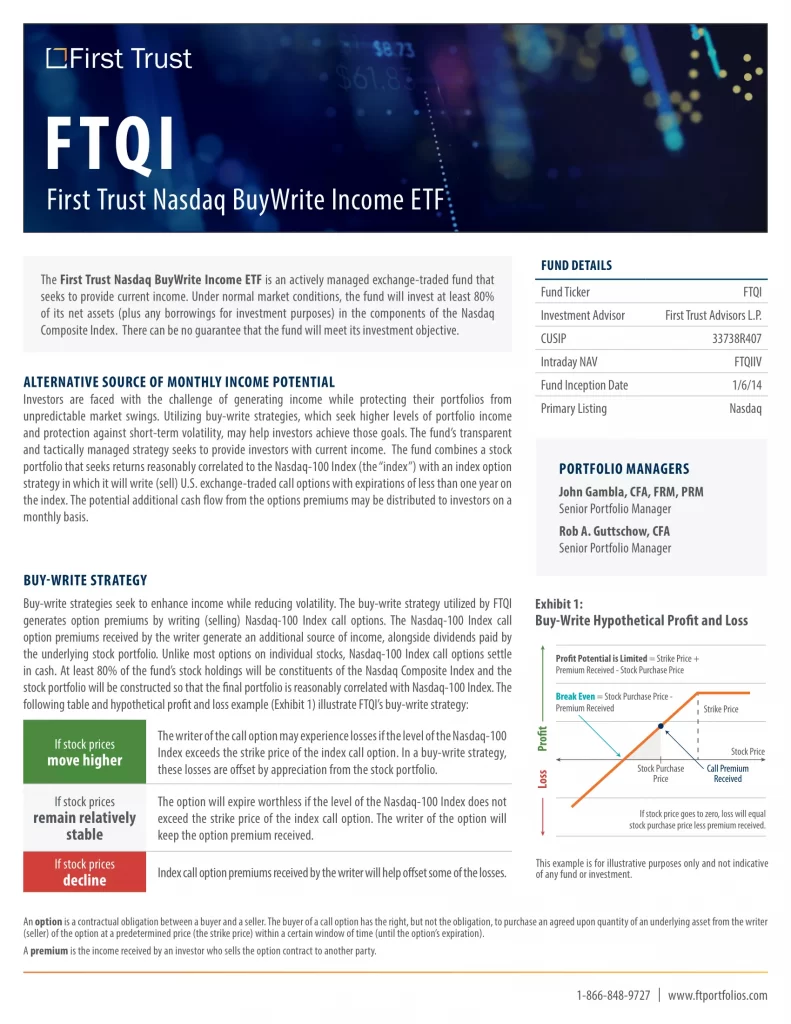
5. XYLD: Global X S&P 500 Covered Call ETF
Global X S&P 500 Covered Call ETF (XYLD) follows a “covered call” or “buy-write” strategy, in which the Fund buys the stocks in the S&P 500 Index and “writes” or “sells” corresponding call options on the same index.

4. FTHI: First Trust BuyWrite Income ETF
First Trust BuyWrite Income ETF (FTHI) has a primary investment objective is to provide current income. The Fund’s secondary investment objective is to provide capital appreciation. The Fund will pursue its objectives by investing in equity securities listed on U.S. exchanges of all market capitalizations and by utilizing an “option strategy” consisting of writing (selling) U.S. exchange-traded covered call options on the Standard & Poor’s 500 Index (the “Index”).
Under normal market conditions, the Fund invests primarily in equity securities listed on U.S. exchanges of all market capitalizations. The Fund will also employ an option strategy in which it will write U.S. exchange-traded covered call options on the Index in order to seek additional cash flow in the form of premiums on the options that may be distributed to shareholders on a monthly basis. A premium is the income received by an investor who sells or writes an option contract to another party. The market value of the option strategy may be up to 20% of the Fund’s overall net asset value.

3. QYLD: Global X NASDAQ 100 Covered Call ETF
Global X NASDAQ 100 Covered Call ETF (QYLD) follows a “covered call” or “buy-write” strategy, in which the Fund buys the stocks in the Nasdaq 100 Index and “writes” or “sells” corresponding call options on the same index.
- QYLD seeks to generate income through covered call writing, which historically produces higher yields in periods of volatility
- QYLD has made monthly distributions 9 years running
- QYLD writes call options on the Nasdaq-100 Index, saving investors the time and potential expense of doing so individually

2. KNG: FT Cboe Vest S&P 500 Dividend Aristocrats Target Income ETF
FT Cboe Vest S&P 500 Dividend Aristocrats Target Income ETF (KNG) seeks investment results that correspond generally to the price and yield (before the Fund’s fees and expenses) of an equity index called the Cboe S&P 500® Dividend Aristocrats Target Income Index Monthly Series (the “Index”).
The Fund will normally invest at least 80% of its total assets (including investment borrowings) in the common stocks and call options that comprise the Index. The Fund, using an indexing investment approach, attempts to replicate, before fees and expenses, the performance of the Index. The Index is owned, developed, maintained and calculated by S&P Opco, LLC (the “Index Provider”). Cboe Vest Financial LLC is the Fund’s investment sub-advisor (“Cboe Vest” or the “Sub-Advisor”).

1. DIVO: Amplify CWP Enhanced Dividend Income ETF
DIVO is an actively managed ETF of high-quality large-cap companies with a history of dividend growth and a tactical covered call strategy on individual stocks. DIVO is strategically designed to offer high levels of total return on a risk-adjusted basis. DIVO seeks investment results that correspond generally to an existing strategy called the Enhanced Dividend Income Portfolio (EDIP). DIVO’s sub-adviser, Capital Wealth Planning (CWP), manages the strategy.
- Income Potential: comprised of high-quality dividend-oriented stocks, along with covered calls on individual stocks
- Active Management: allows the portfolio manager (CWP) to identify opportunities and risks, and act on those decisions in real time
- Seeks to Lower Volatility: dividend and option income may provide lower share price volatility vs. the overall market during times of broad-based market declines

Are Covered Call ETFs a Good Investment?
Covered call ETFs have grown more popular because they offer benefits to investors: Selling covered calls can help a portfolio produce income. This income can be distributed as dividends, offering a potentially higher yield than a traditional ETF. This premium income can help limit volatility by offsetting price drops. This strategy limits the upside growth potential of the investments creating underperformance and less retirement income.
What is the Downside of Covered Call ETFs?
This means that covered call strategies might experience smaller price swings compared to a pure equity investment. The main drawback is that the written call options cap the gains of the ETF.
Can You Lose Money on Covered Call ETFs?
If the price of the underlying stock increases significantly, the ETF may have to sell the stock at the strike price, which could result in a loss.
Why are Covered Call ETFs Awful for Retirement Income?
Covered call ETFs might not offer as much downside protection as regular stock ETFs because the underlying assets can still lose value. Additionally, the performance of the underlying securities and the fluctuation of the options market both have an impact on the income received from selling call options.


